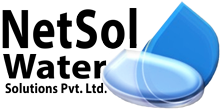How to Analyze Performance of Industrial RO Plant?
Water treatment facilities face increasing demands for efficient operations. Performance analytics for industrial RO plants helps organizations make data-driven decisions. Modern RO plants generate extensive operational data that contains valuable insights about system performance. These insights enable plant operators to optimize operations. Performance analytics transforms raw data into actionable information. This helps plant managers identify problems before they escalate. It also helps them maintain optimal operating conditions. The right analytics approach leads to better membrane life improved water quality and lower operating costs. A structured analytical framework empowers plant operators to extract maximum value from their RO systems. This approach delivers measurable improvements across key performance indicators.
Let us explore how performance analytics drives operational excellence in industrial RO plants.
Key Performance Metrics
Performance metrics form the foundation of RO plant optimization. These metrics provide insights into system health and efficiency. Plant operators track multiple parameters to ensure optimal performance. Water quality parameters indicate membrane condition and filtration effectiveness. Pressure differentials across membrane stages show how well the system handles varying feed conditions. Flow rates and recovery ratios demonstrate overall system efficiency. Temperature changes affect membrane performance and must be monitored closely. Conductivity measurements reveal salt passage trends through membranes.
Water Quality Parameters: Water quality determines the success of any RO operation. Total dissolved solids serve as a key indicator of membrane performance. Turbidity measurements show suspended particle levels in feed water. pH levels impact scaling potential and membrane life. Oxidation-reduction potential affects biological fouling risk. Regular monitoring helps maintain consistent product water quality.
Pressure and Flow Analysis: Pressure readings provide critical operational insights. Feed pressure trends indicate pump performance and energy efficiency. Differential pressure across membrane stages reveals fouling patterns. Permeate flow rates show actual system productivity. Concentrate flow measurements complete the water balance picture. These parameters help optimize system recovery and energy usage.
Energy Efficiency Metrics: Energy consumption impacts operational costs significantly. Specific energy consumption shows energy used per unit of permeate produced. Power factor analysis reveals electrical system efficiency. Peak demand patterns guide energy management strategies. Variable frequency drive performance affects pump efficiency. Tracking these metrics helps minimize energy costs.
Data Collection and Analysis Methods
Proper data collection enables meaningful performance analysis. Modern RO plants use various tools to gather operational data. This data requires systematic analysis to generate useful insights. Plant operators need reliable methods to process large datasets. Effective analysis leads to better operational decisions.
Automated Data Collection: Automated systems streamline data gathering processes. Digital sensors provide real-time parameter measurements. Programmable logic controllers record operational data continuously. Data historians store information for long-term analysis. These systems ensure consistent data quality and availability.
Data Processing Techniques: Raw data needs processing to become meaningful information. Statistical analysis reveals underlying performance trends. Data normalization accounts for varying operating conditions. Correlation analysis shows relationships between parameters. Advanced algorithms detect anomalies in system behaviour.
Visualization Tools: Visual representations make complex data easier to understand. Trend charts show parameter changes over time. Performance dashboards provide operational overview. Heat maps highlight problem areas quickly. These tools help operators spot issues early.
Performance Optimization Strategies
Performance optimization requires structured approaches. Plant operators use analytics to guide improvement efforts. This process involves multiple steps and continuous monitoring. Each strategy targets specific aspects of plant operation. The combined effect leads to overall performance improvement.
Membrane Management: Proper membrane management extends system life. Performance analytics guide cleaning schedules effectively. Feed water pretreatment adjustments prevent fouling. Chemical dosing optimization protects membrane surfaces. These practices maximize membrane performance and longevity.
Energy Management: Energy optimization reduces operational costs. Analytics help identify efficiency improvement opportunities. Load management strategies minimize peak demand charges. Equipment maintenance scheduling improves energy efficiency. These approaches lead to substantial cost savings.
Water Recovery Optimization: Water recovery affects operational efficiency directly. Analytics guide recovery rate optimization efforts. System adjustments maximize product water output. Concentrate management strategies minimize waste. These practices improve overall plant efficiency.
Take control of your industrial RO plant performance today.
Our performance analytics solutions help optimize your operations. Contact our team to learn how data-driven insights can transform your plant performance. Schedule a consultation to discover opportunities for improvement in your RO system. Let us help you achieve operational excellence through advanced performance analytics.
Contact Netsol Water at:
Phone: +91-965-060-8473, Email: enquiry@netsolwater.com



